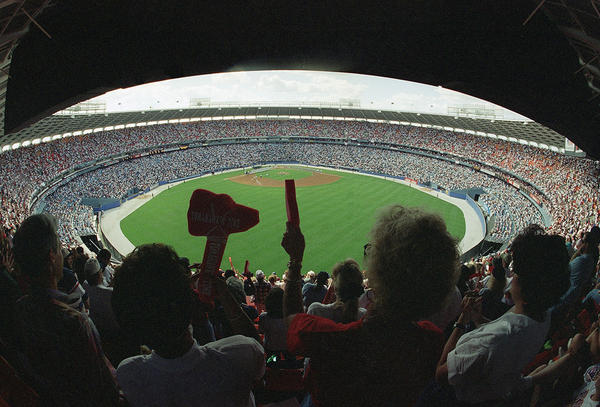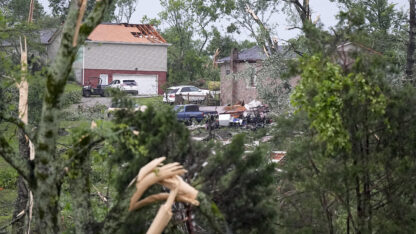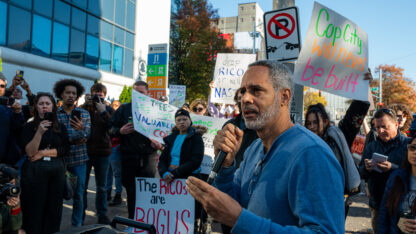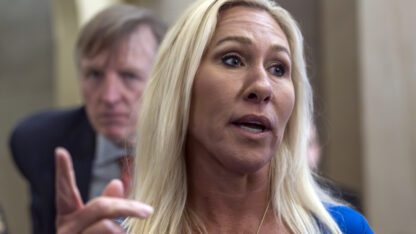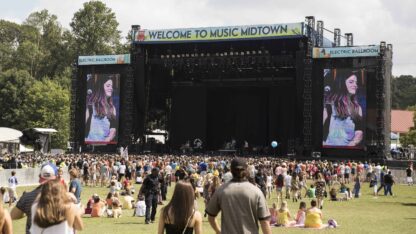Long-Gone Atlanta Stadiums Were ‘Connected To Communities’
A magnolia tree in center field of Atlanta’s first major sports stadium became famous as the resting place for Babe Ruth’s and Eddie Mathews’ home run balls.
Ponce de Leon Park ─ across the street from what is now the trendy Ponce City Market ─ was home to the Atlanta Crackers minor league baseball team for more than half a century, as well as its Negro League counterpart, the Atlanta Black Crackers.
The tree still stands, as part of the Atlanta BeltLine, and as a reminder of a rich sports venue history that seems, like so many other demolished city landmarks, forgotten in time.
On “A Closer Look,” Georgia State University history professor Cliff Kuhn said places like Ponce de Leon Park were “interesting architecturally, and they were connected to communities.”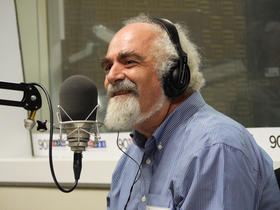
As part of a series on Atlanta stadiums called “Under Construction,” Kuhn discussed Atlanta’s civic efforts in the 1960s to become a “major league city” in ways that transcended sports.
Atlanta Stadium Deals Called ‘Nothing To Brag About’
In the half-century since Ponce de Leon Park was torn down, sports fans in other cities have seen old major league facilities leveled for expensive replacements with contemporary amenities and conveniences.
The trend is no stranger to Atlanta. But in the last two decades, the Braves and Falcons have moved into state-of-the art successors to Atlanta-Fulton County Stadium, only to abandon them for stadiums that will open in 2017.
Short Atlanta Stadium Lifespans Test Sustainability Claims
As an Atlanta resident interviewed by WABE near the new Falcons stadium site said, “I feel like a tourist in my own home town.”

The Georgia Dome, where the Atlanta Falcons have played since 1992, and Turner Field, converted for the Braves following the 1996 Olympics, were touted as home fields for both teams for years to come.
However, that’s turning out to be only a very short number of years.
“We see this pressure going on with stadiums in other communities impacting what’s happening in Atlanta,” Kuhn said.
A sense of disconnect has pervaded the side-by-side locations of Atlanta Fulton-County Stadium and Turner Field.
Long-anticipated economic development projects never came to fruition, and because of neighborhood politics, MARTA never reached that area.
Kuhn said that was “a glaring omission,” and predicted that “we’re going to have even more traffic problems when we get to Cobb County,” where the Braves are relocating.
“I’m not looking forward to the 2017 season,” said Kuhn, a Braves season ticket holder since 1991. “I have to be honest.”
This is the third installment in WABE’s “Under Construction” series. Other installments in the “Under Construction” series include a report on Atlanta’s new stadium deals, an examination of stadiums and sustainability, a look at the fan experience, and an interview with Cobb Commission Chairman Tim Lee. He brokered a controversial 2013 deal to draw the Braves away from Turner Field and downtown Atlanta, where the team has played since 1966.
9(MDAxODM0MDY4MDEyMTY4NDA3MzI3YjkzMw004))
